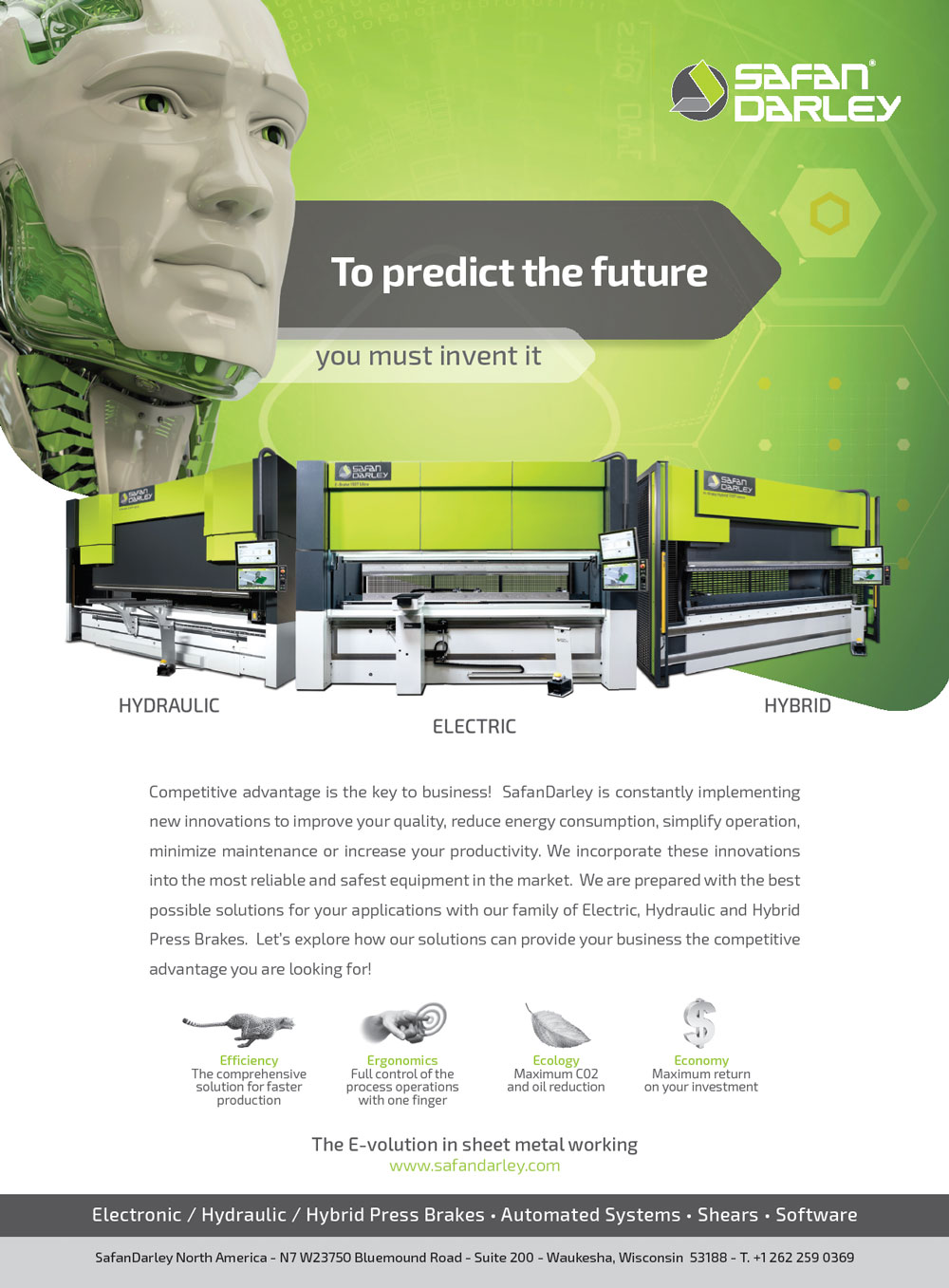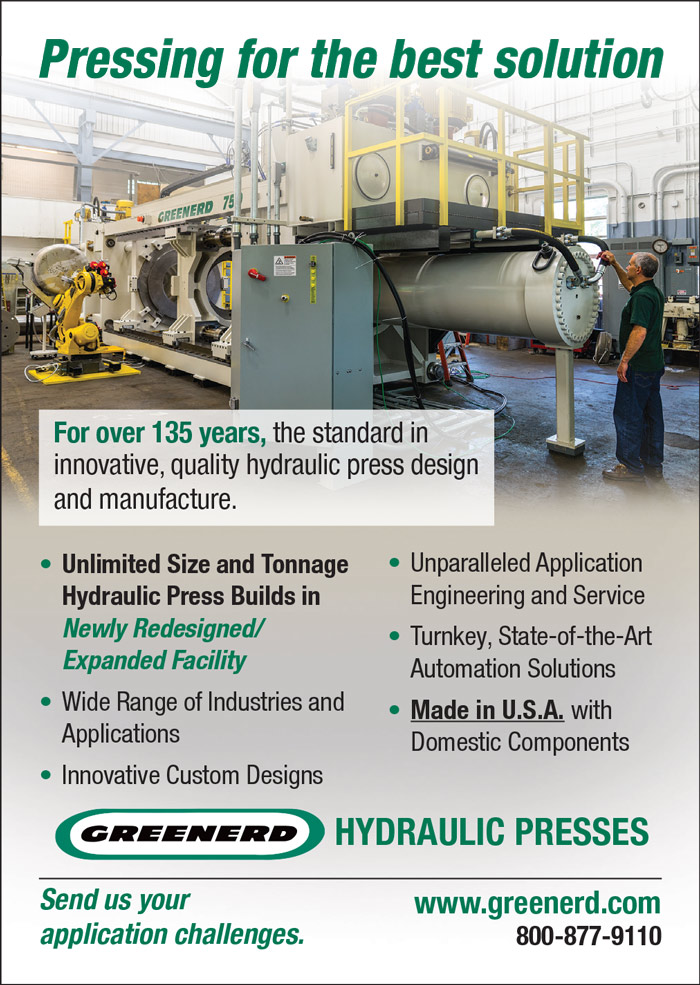Digital Loop
Digital Loop
Digital Loop
n today’s integrated shop floor environment, the lines between dedicated fabrication shops versus machine shops have become blurred. Customer demand for higher value from supply chain partners has prompted companies to expand their scope of services. There is also a greater emphasis on shortening overall manufacturing processes for parts and time to market.
A digital thread connects the development and management of a product’s entire life cycle into a single database. More customers are demanding Industry 4.0 levels of digital documentation across finished assemblies and parts, whether fabricated or machined, because they can. Metrology software and measurement devices have evolved and adapted to the point where 100 percent inspection is now routine. Today’s fabricators can meet Industry 4.0 expectations by implementing a digital model-based metrology strategy.
In January, SpaceX Falcon 9 launched its eighth flight, which included a new fleet of SpaceX’s Starlink internet satellites sent into orbit.
 We use Verisurf software from tooling fabrication to prelaunch preparation.
We use Verisurf software from tooling fabrication to prelaunch preparation. 
“We rely on Verisurf software to drive all our portable coordinate measuring machines (CMM) in a powerful yet simple way,” says Larry Mosse, SpaceX tooling operations manager. “The software helps us maintain precision in the shop and on the launch pad. We use it for everything from tooling fabrication to prelaunch preparation.”
After assembly, the Falcon 9 is raised into its vertical launch position. To follow its intended flight path, launch specifications require the vector of the vehicle to deviate by only 0.02 degrees from nominal over the 180 ft. length.
Model-based metrology is made possible by model-based definition (MBD), a concept first introduced on a PC platform by Verisurf Software more than 20 years ago. When deploying an MBD strategy, the 3D CAD model should contain everything needed to confirm design, manufacturability and verify quality. This includes supporting GD&T annotations. The lines between various acronyms and digital concepts are easily blurred and often misused. In an MBD environment, the 3D CAD model is the authority. MBD is a scalable strategy and model-based metrology is an excellent way to start by supporting the design-build process, validating finished parts, and maintaining and collecting data that can be shared downstream with product lifecycle management (PLM) applications.
The key is to not be overwhelmed or intimidated by MBD, but rather to get onboard with the concept at a level that makes sense. Whether an OEM, tiered supplier or job shop, MBD saves time, improves quality and reduces scrap and rework, all while maintaining the digital thread. MBD opens the door to model-based engineering, digital product definition (DPD), model-based manufacturing, product manufacturing information (PMI), model-based inspection and reporting, and product lifecycle management (PLM).
 Being a traditional car builder does not mean we reject new technologies.
Being a traditional car builder does not mean we reject new technologies. 
Verisurf’s CAD model was the standard to which all parts were measured and inspected, keeping the all-important digital thread intact. Everything that defines the part, from design to manufacturing to inspection and quality reporting, exists in a single digital archive, including how to manufacture and inspect the part.
“We [selected] Verisurf software here at Morgan Cars because it is easy to use and provides the high-end functionality to deliver quality scans and inspection data that can be engineered to meet our exacting standards,” says Graham Chapman, technology manager at Morgan Cars. “Morgan is a traditional methods car builder but that does not mean we reject new technologies to achieve our goals of a British Classic.”
B&B uses Verisurf’s Universal CMM, a software-only solution, to support and drive otherwise non-compatible legacy CMMs. The software also adds additional productivity features found in Verisurf AUTOMATE, such as quickly creating automatic inspection routines simply by clicking on the CAD features to be included in the inspection plan.
“We had inefficiencies in our quality workflow and [use] of measurement and inspection assets,” says Mike Terrell, quality manager at B&B. “All inspection was done strictly in the quality lab, which had already become a bottleneck.
Photo: SpaceX
 Verisurf is backward compatible and supports future growth.
Verisurf is backward compatible and supports future growth. 
Verisurf model-based software can help with the design-build process in many creative ways, including the measurement and inspection of gaps, or real-time flush and step of adjacent surfaces, such as hatches, doors and intersecting body panels. A single laser tracker can be used during inspection and assembly of large parts. A software-based device relocation feature allows the tracker to be moved to different locations around the part while maintaining alignment certainty. The software can also automatically calculate and compensate for the coefficient of thermal expansion during measurement or guided assembly of parts.
Enterprise inspection software must be open and offer interoperability to support current and future manufacturing requirements. Before investing in measurement software, consider whether the 3D model-based software is based on a CAD platform. Will the software import and export all CAD files and models seamlessly? Is the software able to import intelligent GD&T data and support editing? Will the software drive and accept measurement data from all new or legacy CMMs? Does the software have the flexibility and embedded tools to handle a range of measure and inspection data from manual contact probing to non-contact scanning?







